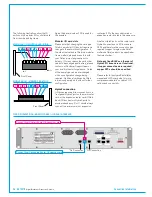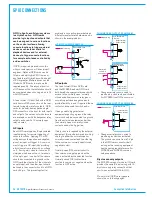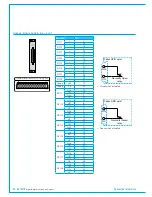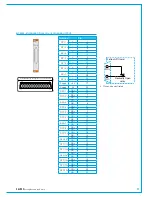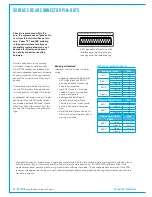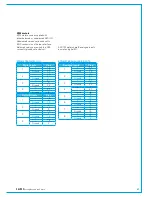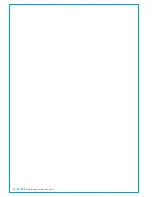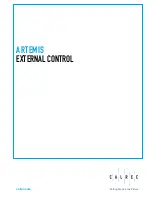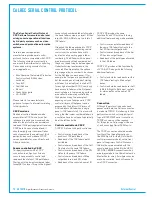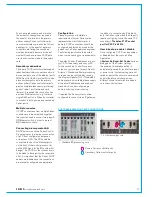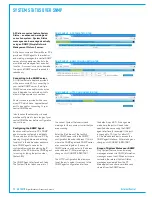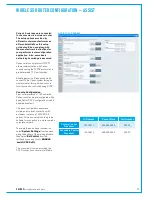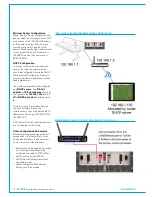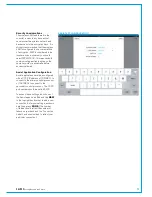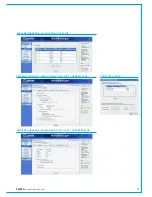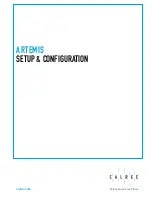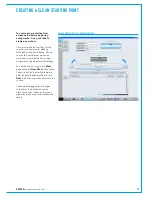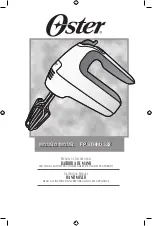
68 ARTEMIS
Digital Broadcast Production Console
External Control
The Hydra2 router allows for 1-to-n
source to destination routing of Hydra
inputs to Hydra outputs, without
using console DSP, or control surface
space. Control over input to output
cross-point routing can be carried out
from a console PC, a standalone PC
running the Hydra2 Organiser, or via
3rd party controllers supporting the
SW-P-08 protocol.
As well as physical Hydra2 I/O ports, the
H2O application and SW-P-08 controllers
also have access to Hydra Patchbays,
providing access to route console DSP
outputs and the ability to change sources
feeding console inputs.
SW-P-08 is a well proven communications
protocol with a very wide uptake by
router and controller manufacturers,
allowing their equipment to control, or to
be controlled by, other manufacturers'
equipment. Although in widespread
use, there is no official standard and
there can be slight variations in different
manufacturers' interpretation. As such,
where possible, Calrec prefer to test
communications with specific systems
before they are used for the first time,
allowing for software changes to be made
if required.
The following 3rd party SW-P-08 control
systems have so far been factory proven
by Calrec:
• L-S-B VSM
• Colledia BNCS
• Grass Valley Jupiter
• Evertz
• NVision
• Axon Cortex
• Harris Edge
Please refer to the relevant
manufacturer’s guidance for specific
information relating to their products.
Connectionandredundancy
SW-P-08 controllers connect to the
front panel RJ45, labelled 'Ethernet',
on the Main primary router card (slot 2
of the processing core). Cards fitted in
expansion router slots do not support this
connection.
In multi-console / multi-core networked
systems, the connection should be made
to the Router card in the core configured
as the Master. Slaved router cores do not
support SW-P-08 connections. An SW-
P-08 connection made to the network's
Master Router can be given access to all
of the I/O and Hydra Patchbays on the
network, irrespective of which core the
I/O connects to directly, or which console
the Hydra Patchbays are configured for.
In the event of a router failure, the
secondary router card will take over and
continue SW-P-08 communications via
the connection made to the primary card's
front panel. If supported by the 3rd party
controller, a secondary connection can
also be made to the secondary router
card in the same core, providing additional
redundancy against cable, port, and
external third party switch / controller
failure.
If required, multiple SW-P-08 and also
EMBER controllers can be connected
simultaneously to the same RJ45 via an
external Ethernet switch / hub.
The router card's front panel Ethernet
connector uses a standard Ethernet
pin-out and passes data via TCP/IP.
Screened Cat5e cabling should be used
to ensure performance in electrically noisy
environments.
For 3rd party controllers that pass SW-
P-08 data over RS232/RS422, serial to
TCP/IP conversion is required. Convertor
units, such as the Perle IOLAN can be
supplied by Calrec.
SW-P-08 ROUTER REMOTE CONTROL
Connectionconfiguration
The 3rd party controller (or the serial to
TCP/IP convertor if used) will need to
be configured to connect using the IP
address of the Calrec Master Router card
(and the secondary if a backup connection
is being made).
In addition to the IP address, the system
will need to be configured to use
TCP
socket port 61000.
The default IP addresses for router cards
are - xxx.yyy.5.0 for a primary and xxx.
yyy.6.0 for a secondary, xxx.yyy is different
for each processing core and can be
confirmed using the Calrec Program
Updater application. If the default IP
addresses are unsatisfactory, Calrec
routers can be configured with alternative
IP addresses of choice. Configuring
alternative IP addresses should only
be done by, or under the guidance of a
Calrec engineer. Please contact your
sales representative, assigned project
leader or customer support to discuss any
alternative addressing requirements.
Note, Calrec default IP addresses are
defined by the core and slot the cards are
fitted in. Alternate, aliased IP addresses
are configured on the cards themselves,
and will therefore follow the card if it is
moved to a different slot or core.
SW-P-08I/Omappingconfiguration
Physical I/O and Hydra Patchbays
that are to be accessible to 3rd party
controllers need to be given SW-P-
08 source / destination values which
correspond to values configured in the
3rd party controller. SW-P-08 values
can be manually typed for each input
source / output destination, or they can
be imported (and exported) in the form of
a CSV file.
SW-P-08 mapping requires the use of the
Calrec H2O GUI, please refer to the H2O
user guide for more details.
Summary of Contents for Artemis
Page 5: ...calrec com Putting Sound in the Picture ARTEMIS INFORMATION...
Page 9: ...calrec com Putting Sound in the Picture ARTEMIS CONTROL SURFACE...
Page 26: ...26 ARTEMIS Digital Broadcast Production Console...
Page 27: ...calrec com Putting Sound in the Picture ARTEMIS PROCESSING CORE BEAM SHINE...
Page 33: ...calrec com Putting Sound in the Picture ARTEMIS PROCESSING CORE LIGHT...
Page 40: ...40 ARTEMIS Digital Broadcast Production Console...
Page 41: ...calrec com Putting Sound in the Picture ARTEMIS CONNECTION INFORMATION...
Page 66: ...66 ARTEMIS Digital Broadcast Production Console...
Page 67: ...calrec com Putting Sound in the Picture ARTEMIS EXTERNAL CONTROL...
Page 80: ...80 ARTEMIS Digital Broadcast Production Console...
Page 81: ...calrec com Putting Sound in the Picture ARTEMIS SETUP CONFIGURATION...
Page 100: ...100 ARTEMIS Digital Broadcast Production Console...
Page 101: ...calrec com Putting Sound in the Picture ARTEMIS PANEL OPTIONS...
Page 110: ...110 ARTEMIS Digital Broadcast Production Console...
Page 111: ...calrec com Putting Sound in the Picture ARTEMIS OBSOLETE PANELS...
Page 114: ...114 ARTEMIS Digital Broadcast Production Console...
Page 115: ...calrec com Putting Sound in the Picture ARTEMIS SPECIFICATIONS...

